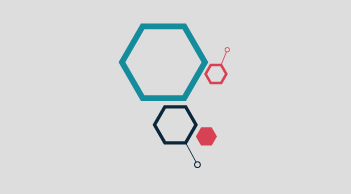-
TrendsRisksSocial Media
-
SectorIT and Communications
In the age of fast information and mass consumption of online content, misleading headlines have become a plague thatthreatens the integrity of the information contributed by organizations. Clickbait is the technique used to capture our attention and get us to click on an attractive article or link, but it comes at a cost that many companies overlook
For Jordi Pérez Colomé, a journalist at El País specializing in technology, “Social networks have created an environment that rewards the eye-catching headline. Before, in the paper, when turning the page, the headline appeared next to the text, now on the Internet between the headline and the text there is always a click. This small leap is so essential thatit has created a concept: clickbait. It has already lived through the whole cycle of legitimate, exaggerated, hypertrophied use, and then it has been criticized, fought and reduced. But, like cockroaches, it does not die.”
THE FALSE PROMISES BEHIND THE CLICKBAIT
Clickbait is based on the promise of surprising, exciting or shocking information, but once clicked, we often find content from a brand that has nothing to do with what is suggested in the headline. Such headlines are designed to generate traffic, increase click-through statistics and earn advertising revenue, rather than provide valuable and truthful information.
Whenwe fall into the clickbait trap, we are contributing to a digital ecosystem where misinformation and low-quality content thrive and that generates a loss of trust in the brand, thus weakening its reputation. And the fact is that we often find examples in which the virality of the newsweighs over balanced information. Misinformation has real consequences in our lives, from wrong decisions based on incorrect data to polarization of opinions in society.

This misinformation also affects consumer informed decision-making in a way that can undermine our ability to delve into important issuesand develop critical thinking, which in turn can negatively affect brand credibility.
For Pedro Coll, Director of Crisis and Risk at LLYC, clickbait is a risk to brand reputation in two directions: both when the brand is the object of clickbait in a medium, and when it is the brand itself that uses it. “In the first case, the reality is not always so surprising as to generate clicks and sometimes this leads to forcing headlines at the cost of sowing doubt around a brand. In the second case, the brand itself undermines its credibility every time it tries to over-proment its own content, press releases or paid media collaborations,” he says.
By opting for trusted sources and verifying the veracity of headlines before sharing them, we can be part of the solution and help build a more ethical digital environment.
By opting for trusted sources and verifying the veracity of headlines before sharing them, we can be part of the solution and help build a more ethical digital environment.
Transparency Indicators Against Disinformation: The Trust Project
 There are currently projects already dedicated to curbing misinformation and combating misleading headlinessuch as The Trust Project, an international consortium of news organizations that promote standards of transparency and work with technology platforms to affirm and amplify the commitment to quality, inclusive and fair journalism, so that readers can make informed decisions about news.
There are currently projects already dedicated to curbing misinformation and combating misleading headlinessuch as The Trust Project, an international consortium of news organizations that promote standards of transparency and work with technology platforms to affirm and amplify the commitment to quality, inclusive and fair journalism, so that readers can make informed decisions about news.
He also explains Jordi Pérezthat “there are even new news apps (Artifact) that rewrite clickbait headlines with AI to reduce their maliciousness. We journalists can help reduce their use, which hurts everyone” and adds that “the solution is not just to go back to 1995 headlines. There are eye-catching, explanatory, interrogative headlines that are legitimate and make it clear to the public what will be on the other side of their click.”
By saying ‘no’ to misleading headlines and opting for truthful information, we are promoting a healthier digital ecosystem and contributing to an informed and aware society.
Among the solutions we can find for organizations to combat misleading headlines include:
- Maintain a stable relationship with journalists:Establish close and trustworthy communication with journalists to ensure that the information provided is accurate and that headlines properly reflect the content.
- Encourage ethics and accountability:Establish a clear code of ethics that promotes truthfulness and accuracy in all communications, including headlines.
- Monitor trends:Regularly monitor metrics and headline performance to identify patterns or trends. In doing so, we can use this data to improve headline quality in the future.
At LLYC, we understand that transparency is the key to successful communications for organizations, especially in an environment where misleading headlines and misinformation can complicate hundreds of situations for our clients. Through our experience in managing these challenges, we have learned that honesty and clarity are critical to building trust and effectively addressing any issue.



